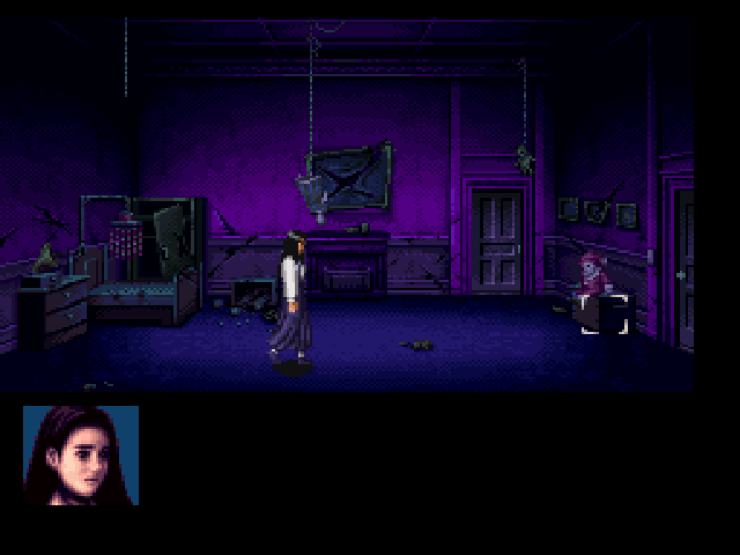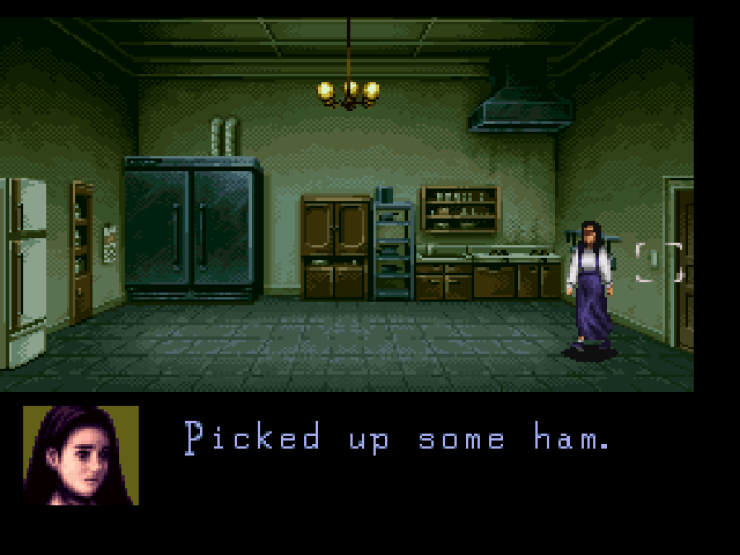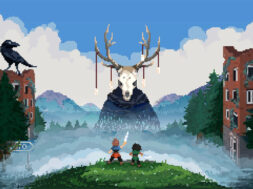After last year’s divisive yet memorable remake of the 1977 cult classic Suspiria, it looks like its original director, Dario Argento, is finally emerging from the background of so many recent releases (Mother! and Hereditary to name a few) to once again stand in the popular horror spotlight.
His influence, which continues to cast an imposing shadow across modern culture, has not only stalked the screens of filmgoers for many years, but can also be found lurking throughout the short yet fascinating history of horror gaming. Perhaps the most obvious example of Argento’s work influencing the creation of a video game, also happens to be one of the most interesting.
Clock Tower is an adventure horror game released for the Super Famicom in 1995. It is a somewhat obscure 16-bit title, having never made it outside of the Japanese market (despite seeing several releases for newer consoles), but it is also considered one of the very first examples of survival horror in gaming. Its director, Hifumi Kono, felt so inspired by Argento’s unique approach to stylised horror, that he wanted to create a game that would not only pay homage to Argento’s films, but would make players actually feel like they were in one.

Considering the limitations of the hardware at the time, and how very few horror games had been made up to that point, the task of translating Argento’s films into such an experimental format was no mean feat for Kono and his studio, Human Entertainment. Nevertheless, what they did manage to achieve was so impressive, that it continues to inspire developers to this day.
Typically intended for the use of a mouse and keyboard, point-and-click games had, up to the time of Clock Tower’s development, been created almost entirely by western studios such as the likes of Sierra and Lucas-Arts. Not only was Clock Tower a point-and-click game created with a controller layout in mind, but it was also developed by a tiny Japanese studio most well-known for making platformers and sports titles. Borrowing heavily from two of Argento’s most beloved films, the previously mentioned Suspiria and 1985’s Phenomena, Clock Tower was undeniably unique from the get-go.
The most obvious elements of mimicry can be seen in the game’s protagonist: Jennifer. Bearing a striking resemblance to Phenomena’s very own Jennifer Corvino (who was in turn, played by Jennifer Connelly), the young orphan also finds herself living in an extravagant mansion in the forests of Northern Europe, after being adopted by a mysterious benefactor, Mr. Barrows. What follows is a surprisingly detailed plot (for a game made in the mid 90’s at least) that happens to include many key elements found in both Phenomena and Suspiria, such as; a murderous deformed child stabbing young girls with scissors, the use of satanic magic and sacrifices, and men driven insane by being locked in hidden dungeons, but to name a few.

But Clock Tower’s story doesn’t just include characters and events from Argento’s work like a piece of second-rate fanfiction, it translates his vision into an entirely different medium in an entirely unique way. Most notably, is how Clock Tower uses its low-res graphical style to portray Argento’s iconic use of color, lighting, and set design. Regardless of how unrealistic the game’s characters and environments may appear, Clock Tower looks undeniably striking, with a bold application of contrasting red and blue color palettes and clever use of shadows and lighting. Arguably, it’s far more fitting for a game inspired by Argento’s films to veer away from realism, in favor of a more exaggerated and indulgently colorful version of reality. However, the game’s characters are still made recognizable by the use of a-then popular technique, whereby photographs of people were digitized into a 16-bit format (a rudimentary form of motion capture).
Why Argento’s Deep Red is a Masterpiece
This technique was used to create character portraits that appear whenever Jennifer is in conversation with someone, as well as displaying Jennifer’s intense reactions to a shocking revelation or horrific event. This is how Kono and his team attempted to translate the direction of Argento’s female leads, and considering how little subtlety is involved in those performances, it seems that having exaggerated portraits of characters’ expressions was a logical step to take.
This technique also served an additional purpose of displaying the player-character’s health-bar, whereby both the portrait’s color and Jennifer’s expression indicate her general well-being. Much like in Suspiria, color is used as a visual language to communicate mental distress, with Jennifer’s condition gradually worsening with every new horror she encounters (red being a particularly strong indication of incoming peril). If Jennifer finds herself in a moment of extreme danger, then much like Argento’s victims, it’s physically harder for her to survive if she’s afraid. Being scared means that Jennifer is more likely to fail a ‘panic mode’ check (when the player must button-mash to struggle free), and is more likely to trip over her own feet when running. Jennifer’s health-bar is yet another example of Clock Tower applying Argento’s methods of color saturation, but in a way that only video games can achieve.

And there’s plenty for both Jennifer and the player to be scared about in Clock Tower. Any horror aficionado knows that tension is essential to appreciating a good scare, and thankfully, Clock Tower is a masterclass in building anticipation for fear. The game’s animations may appear laborious for the sake of being pretty, but they successfully keep players wondering during the quieter moments, and clinging to their seats when things start getting dicey. Much like the scene in Suspiria, in which Sara desperately tries to stack boxes to reach an upper window, these lengthy animations evoke an intense feeling of panic whenever danger approaches.
Audio is also used to great effect in Clock Tower, with minimal sound playing out during the bulk of the game’s action, except for Jennifer’s echoing footsteps and a solitary phone which can be occasionally heard ringing (despite having had its line cut). When music is playing it usually indicates the presence of something malevolent, with one particular track only sounding when Jennifer is being directly pursued by someone. It’s a piece of music that will inevitably loop several times during a single encounter, but much like Argento’s iconic use of musical cues during Suspiria (and to a lesser extent, Phenomena), it still manages to effectively imbue the player with a feeling of panic.

Escaping from pursuit is a running theme throughout Argento’s entire filmography, with viewers made to fear for victims’ lives thanks to the effective use of cinematography and framing. Clock Tower earns its credentials as being one of the very first examples of survival horror, through its emphasis of flight-over-fight gameplay. Scenarios wherein Jennifer can strike back at her pursuers are few and far between, with players needing to pay attention to the location of hiding spots, so that they may be used during future chase-sequences.
However, much like many of Argento’s victims, not every hiding spot will guarantee safety for Jennifer. Case in point, during my most recent playthrough I attempted to hide Jennifer on an upper platform by climbing a ladder and pushing it down. Believing she was safe, I finally relaxed, just to have the killer burst through the ceiling next to her, prompting me to yell in fear and urge Jennifer to flee in the other direction. Taking control of such a vulnerable character during such a dangerous situation is an incredibly stressful experience for the player, and in many ways, it’s what makes playing Clock Tower far more frightening than watching any of Argento’s films. In this fashion, Kono and his team took the vulnerability of Suspiria and Phenomena’s protagonists and elevated its effectiveness by translating it into a gaming mechanic.
This hiding mechanic has subsequently defined part of the survival horror genre, particularly its more modern contemporaries, with recent-ish releases such as Amnesia: The Dark Descent, Outlast 1 & 2, and Alien: Isolation all favoring a flight-over-fight approach to gameplay. For several years after Clock Tower’s creation, Japan successfully cemented itself as the birthplace of survival horror gaming, with pioneering titles such as such as the Fatal Frame series and Haunting Ground continuing to carry the torch that Hifumi Kono and his team had first ignited all those years ago.

In essence, Argento’s filmography generated a spark of inspiration that would lead to an entire chain-reaction of horror creation; with Clock Tower’s revolutionary approach to survival horror inspiring its very own clutch of creators, who would then in-turn inspire other creators, and so on, so forth. When an Italian horror flick can cause such ripples across the most unexpected of lakes, it’s undeniably worth being remembered in today’s cultural zeitgeist.









